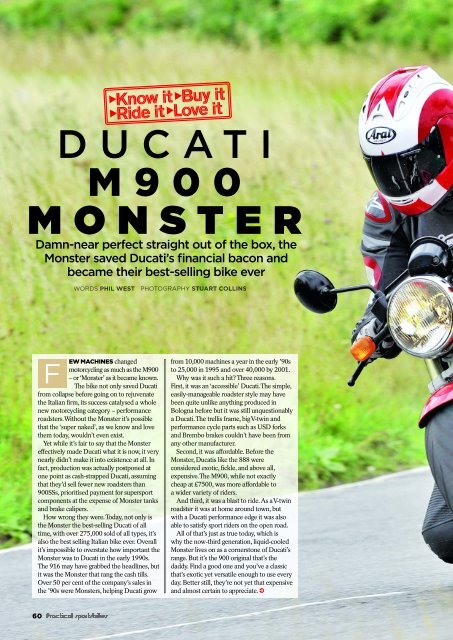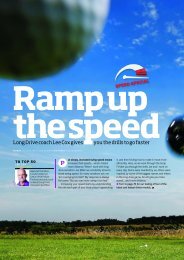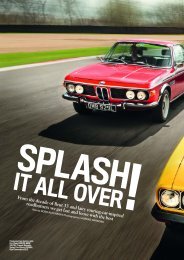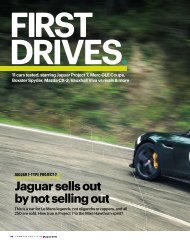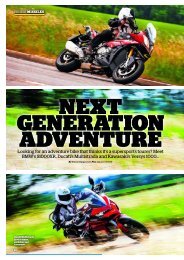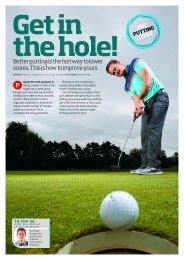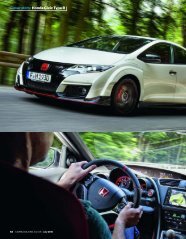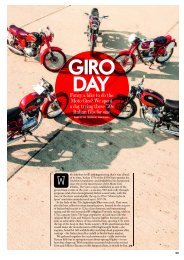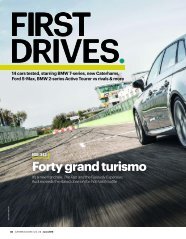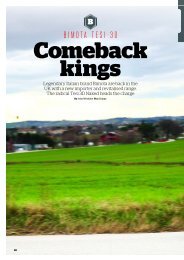Motorbikes.pdf
You also want an ePaper? Increase the reach of your titles
YUMPU automatically turns print PDFs into web optimized ePapers that Google loves.
DUCATI<br />
M900<br />
MONSTER<br />
Damn-near perfect straight out of the box, the<br />
Monster saved Ducati’s financial bacon and<br />
became their best-selling bike ever<br />
WORDS PHIL WEST PHOTOGRAPHY STUART COLLINS<br />
EW MACHINES changed<br />
F<br />
motorcycling as much as the M900<br />
– or ‘Monster’ as it became known.<br />
The bike not only saved Ducati<br />
from collapse before going on to rejuvenate<br />
the Italian firm, its success catalysed a whole<br />
new motorcycling category – performance<br />
roadsters. Without the Monster it’s possible<br />
that the ‘super naked’, as we know and love<br />
them today, wouldn’t even exist.<br />
Yet while it’s fair to say that the Monster<br />
effectively made Ducati what it is now, it very<br />
nearly didn’t make it into existence at all. In<br />
fact, production was actually postponed at<br />
one point as cash-strapped Ducati, assuming<br />
that they’d sell fewer new roadsters than<br />
900SSs, prioritised payment for supersport<br />
components at the expense of Monster tanks<br />
and brake calipers.<br />
How wrong they were. Today, not only is<br />
the Monster the best-selling Ducati of all<br />
time, with over 275,000 sold of all types, it’s<br />
also the best selling Italian bike ever. Overall<br />
it’s impossible to overstate how important the<br />
Monster was to Ducati in the early 1990s.<br />
The 916 may have grabbed the headlines, but<br />
it was the Monster that rang the cash tills.<br />
Over 50 per cent of the company’s sales in<br />
the ’90s were Monsters, helping Ducati grow<br />
from 10,000 machines a year in the early ’90s<br />
to 25,000 in 1995 and over 40,000 by 2001.<br />
Why was it such a hit? Three reasons.<br />
First, it was an ‘accessible’ Ducati. The simple,<br />
easily-manageable roadster style may have<br />
been quite unlike anything produced in<br />
Bologna before but it was still unquestionably<br />
a Ducati. The trellis frame, big V-twin and<br />
performance cycle parts such as USD forks<br />
and Brembo brakes couldn’t have been from<br />
any other manufacturer.<br />
Second, it was affordable. Before the<br />
Monster, Ducatis like the 888 were<br />
considered exotic, fickle, and above all,<br />
expensive. The M900, while not exactly<br />
cheap at £7500, was more affordable to<br />
a wider variety of riders.<br />
And third, it was a blast to ride. As a V-twin<br />
roadster it was at home around town, but<br />
with a Ducati performance edge it was also<br />
able to satisfy sport riders on the open road.<br />
All of that’s just as true today, which is<br />
why the now-third generation, liquid-cooled<br />
Monster lives on as a cornerstone of Ducati’s<br />
range. But it’s the 900 original that’s the<br />
daddy. Find a good one and you’ve a classic<br />
that’s exotic yet versatile enough to use every<br />
day. Better still, they’re not yet that expensive<br />
and almost certain to appreciate.<br />
60


